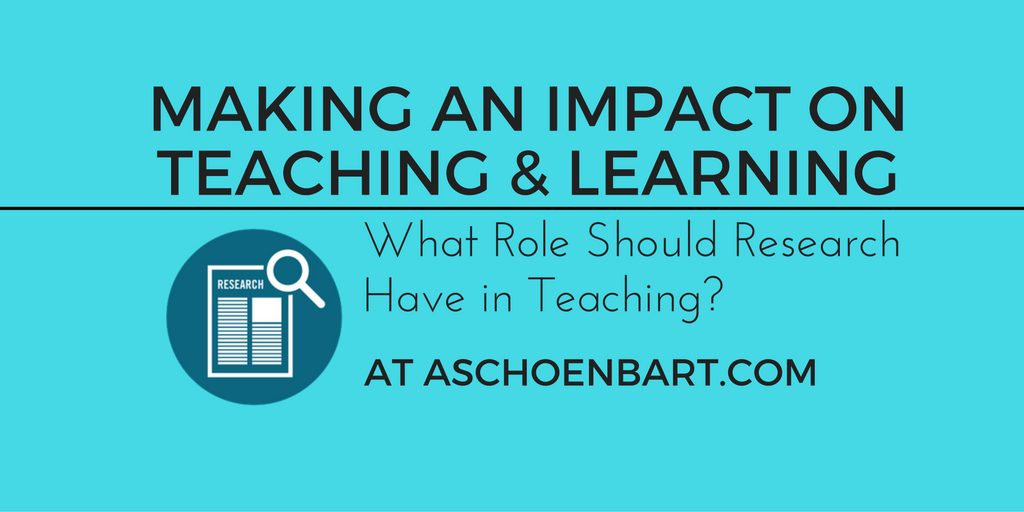Making an Impact on Teaching & Learning

The average teacher makes 1,500 decisions a day. Let’s make sure that they're the best ones. Hattie’s work reminds us that so many influences and strategies have a positive impact, but it’s important that educators are making the best choices to produce the desired results for learning.

How do I know if my teaching really has an impact on learning?
That’s the question that I grappled with for most of the day on Friday. Do my instructional choices lead to a positive impact on learning? Am I building a culture for meaningful learning--as a teacher, as a coach, and as a part of a school system? What does the research say about high impact teaching? Any why don’t we talk about these questions more often?
On Friday, I attended a conference from my local @PNWBOCESexploring student engagement and the 4 Cs: communication, collaboration, critical thinking, and creativity. Educators from all around the region gathered to learn, share, and connect, and while the sessions were valuable, it was the keynote from Peter DeWitt that really stuck with me.
Peter spoke about high impact, research-based, practical strategies to make positive changes in schools and learning. He discussed the value of climate as the 5th C and a “plate where everything else should rest.” I liked that he provided time for the audience to discuss, reflect, and participate, and loved how seamlessly he integrated research into his ideas. In particular, his discussion of the work of John Hattie in Visible Learning spun through my mind all day.
If research shows certain strategies to have a tangible impact on learning, why isn’t that something that we’re talking more about? Teacher training and professional learning often discusses big ideas, anecdotes, and abstract strategies, but doesn’t always address the practical impact nearly enough. I’d guess that most teachers agree that reciprocal teaching is a good strategy, but for me, learning that it has a .74 effect size makes it all the more important.
Hattie’s work ranks 138 influences on learning by studying their effect size based on a study of 1,200 meta-analyses. Basically, he studies the influences that have represent best practices and lead the highest impact on achievement. The average effect size is 0.40, while 1.0 represents the growth of one year; therefore, an effect larger than 0.40 is above average and above 1.0 is a huge growth in learning. Learn more about Hattie and these influences at VisibleLearning.org.
Tools and ideas to transform education. Sign up below.
What Role Should Research Have in Teaching?
Teacher estimates of achievement, collective teacher efficacy, and self-reported grades. These three influences have the highest effect sizes of all, according to Hattie (1.62, 1.57, and 1.33, respectively). I want my student to rise to high expectation. I hope that my teachers feel confident in their abilities and teaching. And I love having students self-assess, report, and reflect. But having a foundation in this research to further develop these ideas provides a whole new language to the conversation.
I don’t believe in silver bullets in education; there’s not one influence or idea that will simply fix our problems and help students achieve, but an understanding of these findings has really inspired me to learn more. It’s probably the end-of-semester doctoral student mode, but I’m fascinated by this type of research and a more thorough understanding of how I really influence student achievement.
As a teacher, I want to keep this in mind and plan to share this research with my students. I want to continue to work on building relationships, promoting student agency, and providing effective feedback for growth. As a coach, I want to use to use it as a springboard for discussion with teachers. I bought Hattie’s books this weekend, Visible Learning and Visible Learning for Teachers, and am eager to dive in for more.
How does research influence your teaching, practice, or work with students? Share in the comments or on Twitter @MrSchoenbart.
cross posted at www.aschoenbart.com
Adam Schoenbart is a high school English teacher, Google Education Trainer, and EdD candidate in Educational Leadership. He teaches grades 10-12 in a 1:1 Chromebook classroom at Ossining High School in Westchester County, NY and received the 2014 LHRIC Teacher Pioneer Award for innovative uses of technology that change teaching and learning. Read more at The SchoenBlog and connect on Twitter @MrSchoenbart.
